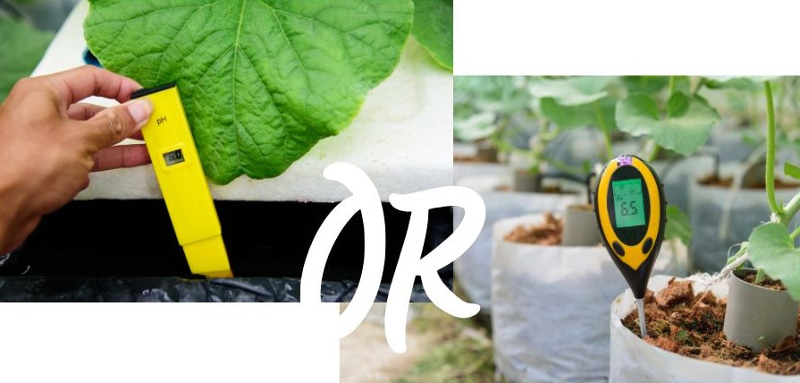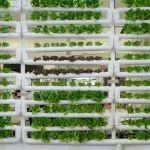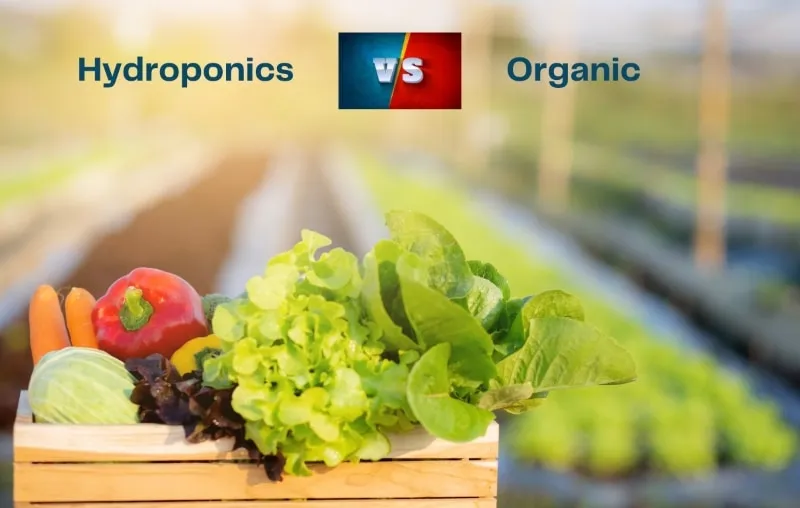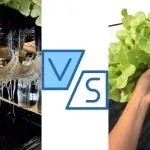When it comes to hydroponic gardening, one of the most important decisions you’ll make is choosing between a vertical or horizontal setup. While both systems have their advantages and disadvantages, the choice ultimately comes down to your specific needs and preferences. In this blog post, we’ll explore the differences between vertical vs horizontal hydroponics, and help you determine which option is best for your unique situation.
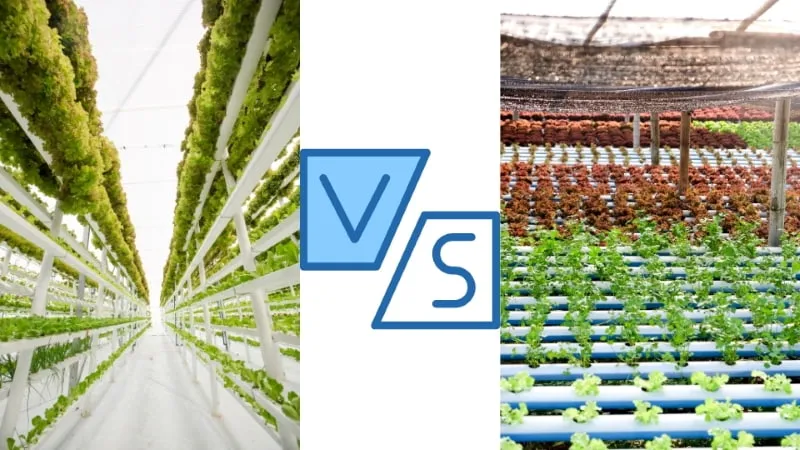
Whether you’re a seasoned hydroponic gardener or just starting out, understanding the differences between vertical and horizontal hydroponics is important. With a vertical setup, plants are stacked on top of each other in towers or columns, while a horizontal system involves plants grown side by side in a flat layout. Each system has its own benefits and drawbacks, from space efficiency to ease of use. By the end of this post, you’ll have a better understanding of which system will work best for your available space, the types of plants you want to grow, and your overall goals for your hydroponic garden.
- Understanding Vertical Hydroponics:
- Exploring Horizontal Hydroponics:
- Factors to Consider in Choosing Between Vertical and Horizontal Hydroponics:
- Comparison of Growing Conditions:
- Crop Suitability and Growth Potential:
- Design and Setup Considerations:
- Maintenance and Operation:
- Vertical vs Horizontal Hydroponics: Pros and Cons
- FAQs:
- Conclusion
Understanding Vertical Hydroponics:
Vertical hydroponics revolutionizes the way we utilize space by growing plants vertically instead of horizontally. Plants stack up vertically, at right angles to the ground. This innovative approach offers several key advantages for indoor gardening enthusiasts.
Maximizing Space Utilization:
Vertical hydroponics allows you to make the most of limited space. By growing plants upwards, you can stack multiple layers of plant beds or stagger the placement of each individual plant along the walls of a tower, maximizing your cultivation area and increasing plant density.indoor vertical hydroponic garden
Increased Crop Yield:
One of the major benefits of vertical hydroponics is its ability to produce higher crop yields in a smaller footprint. With multiple layers, you can grow more plants in the same space, significantly increasing your harvest.
Efficient Resource Utilization:
Vertical hydroponics is known for its efficient use of resources such as water, nutrients, and energy. The vertical design allows for precise nutrient and water delivery to plants, minimizing wastage and promoting optimal growth.
Examples of Vertical Hydroponic Systems:
Tower Gardens:
Tower gardens are vertical structures that consist of multiple planting pockets or trays stacked on top of each other. They provide a compact and visually appealing way to grow a wide range of plants.
Vertical Wall Systems:
Vertical wall systems utilize vertical panels or structures with pockets or troughs to grow plants. Hydroponic grow walls are particularly popular for growing herbs, greens, and ornamental plants in small spaces.
Hanging Gardens:
Hanging gardens involve suspending plant containers or baskets from a support structure. This approach maximizes vertical space and is ideal for trailing or vining plants.
Related: Here is our comprehensive guide on vertical hydroponic gardening.
Exploring Horizontal Hydroponics:
Horizontal hydroponics, on the other hand, involves growing plants in a horizontal layout, offering its unique set of advantages for indoor gardening enthusiasts. As they would in traditional outdoor gardens, the plants grow on a horizontal plane.
Ease of Access and Maintenance:
Horizontal hydroponics systems are generally easier to access and maintain since the plants are at a convenient height. This makes tasks like pruning, harvesting, and nutrient replenishment more manageable.
Scalability for Larger Cultivation Areas:
Horizontal hydroponics systems can be easily scaled up to accommodate larger cultivation areas. They are commonly used in commercial hydroponic setups where space is not a constraint.
Flexibility in Plant Spacing and Arrangement:
With horizontal hydroponics, you have more flexibility in plant spacing and arrangement. This allows you to adapt your setup to different plant varieties and optimize their growth conditions.
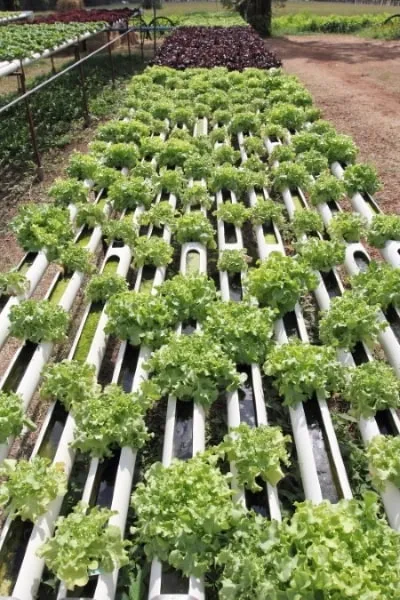
Examples of Horizontal Hydroponic Systems:
Nutrient Film Technique (NFT):
NFT involves a continuous flow of nutrient-rich water that trickles over the roots of the plants, providing them with essential nutrients. This system is ideal for growing leafy greens and herbs. This system can be designed to be set up for hydroponic vertical gardening as well.
Related: Read up on how NFT systems work.
Deep Water Culture (DWC):
DWC entails suspending plant roots in a nutrient solution, providing them with constant access to oxygen and nutrients. It is commonly used for growing larger plants like tomatoes and cucumbers. The floating raft method can be used for stacking in a commercial DWC system design.
Related: Read up on how DWC systems work.
Drip Irrigation Systems:
Drip irrigation systems deliver nutrient-rich water directly to the plant roots through a network of tubes and emitters. This approach offers precise control over water and nutrient delivery and is suitable for a wide range of crops.
Ebb and Flow (Flood and Drain) Systems: To grow plants using ebb and flow hydroponics, one must regularly flood the roots of the plants with water and nutrient-rich solutions (ebb) and then drain the solution back into a reservoir (flow).
Factors to Consider in Choosing Between Vertical and Horizontal Hydroponics:
When deciding between vertical and horizontal hydroponics, several factors should be taken into consideration to ensure the success of your indoor garden.
Available Space and Location Considerations:
Evaluate the available space you have for your indoor garden. If you have limited vertical space, a horizontal system might be more suitable. Conversely, if you have tall ceilings or unused vertical walls, vertical hydroponics can make the most of the available space.
Crop Selection and Compatibility:
Consider the types of plants you wish to grow. Some plants, like leafy greens, herbs, and strawberries, thrive in vertical systems, while others, like vine crops or larger vegetables, may perform better in horizontal setups. Ensure the system you choose aligns with your desired crop selection.
Resource Efficiency and Sustainability Goals:
If resource efficiency and sustainability are important to you, vertical hydroponics might be a preferred choice. Its efficient use of resources, including water and energy, can help reduce waste and promote eco-friendly gardening practices. This is a big factor when it comes to vertical farming hydroponics.
Personal Preference and Gardening Goals:
Ultimately, your personal preferences and gardening goals should guide your decision. Consider factors such as aesthetics, ease of maintenance, and the level of involvement you want in your indoor garden.

Comparison of Growing Conditions:
The growing conditions provided by vertical and horizontal hydroponic systems differ in several key aspects, including:
Light Distribution and Plant Exposure:
In vertical systems, plants are stacked, which can result in shading of lower layers. Adequate artificial lighting or careful plant selection is necessary to ensure all plants in stacked hydroponic systems receive sufficient light. In horizontal systems, plants are typically more evenly exposed to light.
Air Circulation and Ventilation:
Vertical systems can create microclimates, with reduced airflow between layers. Proper ventilation and air circulation should be ensured to prevent issues like excessive humidity or stagnant air. Horizontal systems generally offer better natural airflow.
Temperature and Humidity Control:
The arrangement of plants in vertical systems can affect temperature and humidity distribution. Monitoring and maintaining appropriate temperature and humidity levels are crucial for both systems, with consideration for factors such as air movement and heat dissipation.
Crop Suitability and Growth Potential:
Different crops have varying preferences when it comes to vertical or horizontal hydroponics. Consider the following factors:
Crops that Thrive in Vertical Hydroponics:
Vertical hydroponics is well-suited for leafy greens, herbs, strawberries, and small-statured plants that benefit from the compact, space-saving design. These crops typically have shorter growth cycles and can flourish in a vertical hydroponics setup.
Crops that Excel in Horizontal Hydroponics:
Larger plants, vine crops, and those with extensive root systems often perform better in horizontal hydroponics. Tomatoes, cucumbers, peppers, and melons are examples of crops that can thrive in horizontal setups but will need expert care in an indoor vertical hydroponic garden.
Factors Affecting Crop Selection for Each System:
Other factors, such as light requirements, root support, and growth habits, also play a role in determining which crops are best suited for vertical or horizontal systems. Consider the specific needs of your chosen crops to ensure optimal growth potential.
Design and Setup Considerations:
Designing and setting up your hydroponic system requires careful planning and consideration. Here are some key points to keep in mind for both vertical and horizontal systems:
Vertical Hydroponics System Design and Installation:
Choose the right structure and materials based on your available space and desired aesthetics. Consider factors like weight-bearing capacity, water drainage, and accessibility. Optimize vertical space by utilizing techniques such as trellising, staggered planting, or vertical grow towers.
Horizontal Hydroponics System Design and Setup:
Plan the configuration and layout of your horizontal hydroponics system, considering factors like plant spacing, access to plants, and irrigation needs. Select appropriate containers or growing beds based on the chosen system, and ensure proper drainage and water flow.
Nutrient and Water Delivery Methods:
Both vertical and horizontal hydroponics require careful management of nutrient and water delivery. Determine the most suitable method for your chosen system, such as drip irrigation, nutrient film technique, or deep water culture. Ensure proper monitoring and adjustment of nutrient levels and pH to support plant health and growth.
Maintenance and Operation:
Maintaining your hydroponic system is essential for its long-term success. Consider the following maintenance requirements for both vertical and horizontal systems:
Maintenance Requirements for Vertical Hydroponics:
Regularly inspect and clean vertical structures, ensuring proper water flow and drainage. Monitor and adjust nutrient levels, pH, and water quality. Prune plants as needed to prevent overcrowding and promote air circulation. Implement pest and disease management strategies to maintain healthy plants.
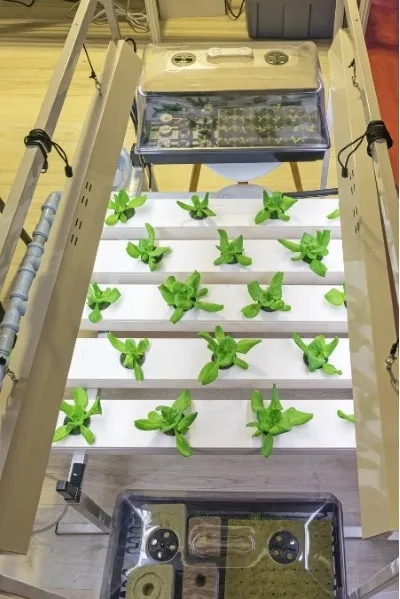
- Water Flow and Drainage: Ensuring proper water flow and drainage is crucial in vertical systems to prevent waterlogging or uneven distribution. Regular monitoring and adjustment may be required.
- Pruning and Plant Training: Vertical systems may require more frequent pruning and training to manage plant growth and maintain adequate light exposure for lower layers.
- Pest and Disease Management: Close proximity of plants in vertical systems can increase the risk of pest and disease spread. Regular monitoring, proper sanitation, and implementing preventive measures are essential.
Maintenance Requirements for Horizontal Hydroponics:
Maintain proper water flow and oxygenation in horizontal systems. Regularly monitor nutrient levels, pH, and water quality. Trim plant roots and provide support when necessary. Implement pest and disease management practices. Periodically check and clean irrigation components to prevent clogging.
- Nutrient Solution Management: Monitoring and maintaining nutrient levels, pH, and water quality are crucial for horizontal systems. Adjustments may be necessary to ensure optimal nutrient delivery to plants.
- Root System Maintenance: Horizontal systems often require periodic root trimming and support for plants with vigorous growth to prevent overcrowding and tangling.
- Irrigation System Maintenance: Drip emitters, tubes, or other irrigation components in horizontal systems should be regularly checked for clogs or leaks to maintain efficient water delivery.
Vertical vs Horizontal Hydroponics: Pros and Cons
Let’s summarize the advantages and disadvantages of vertical and horizontal hydroponics:
Vertical Hydroponics
Advantages:
- Maximizes space utilization
- Increases crop yield in a smaller footprint
- Efficient use of resources
- Aesthetically pleasing and visually appealing
Disadvantages:
- Requires careful management of light distribution
- Potential microclimate challenges
- May involve more complex setup and maintenance
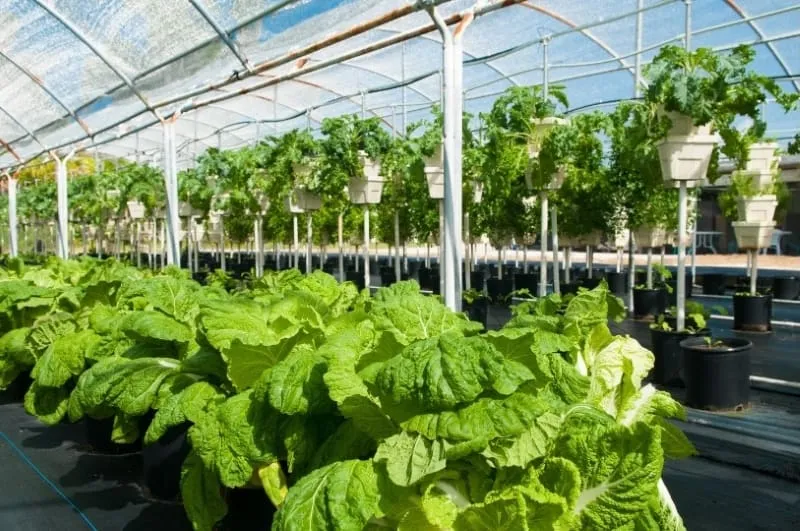
Horizontal Hydroponics:
Advantages:
- Easy access and maintenance
- Scalability for larger cultivation areas
- Flexibility in plant spacing and arrangement
- Better natural airflow
Disadvantages:
- Requires more horizontal space
- Potential challenges in maintaining even light distribution
- Prone to certain pests and diseases due to plant proximity
FAQs:
Conclusion
In conclusion, choosing between vertical and horizontal hydroponics depends on various factors, including available space, crop selection, resource efficiency goals, and personal preferences. Assess your specific needs and gardening goals to determine the most suitable system for your indoor garden. Remember, both vertical and horizontal hydroponics offer unique advantages, and success ultimately lies in aligning the chosen system with the needs of your plants and the available resources.
Evaluate your space, select your crops wisely, and consider factors like resource efficiency, maintenance requirements, and desired growth potential. By making an informed decision, you can embark on an exciting journey into the world of hydroponics, creating a thriving indoor garden that suits your individual circumstances and aspirations. Happy gardening!

